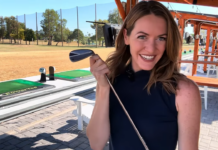It’s been two years since the last class of Vokey wedges was released. Was it worth the wait?
By TJ Knapp
It seems like most OEMs try and bring new equipment to the table every single year. However, that’s not always the case with Titleist. They changed the ProV1 balls for the first time in forever last year and just retired the AP2s irons, which have been around since 2008. The only piece of equipment Titleist releases on an annual basis are woods. And the last time we got to talk about new Titleist Vokey wedges was in 2018 when the SM7’s were released. So why wait so long to release new wedges and was it worth the wait?
Jump to the section you want to read:
Product Review: Titleist Vokey SM8 Wedges
The answer is actually quite simple – because they didn’t need to. Vokey wedges have had the same Spin-milled grooves for years and have stayed atop the wedge market while making minimal changes. The reason for the long layover was to have time to gauge the market to see which combinations of grind plus bounce needed to be added and subtracted from the Vokey lineup. The one core change they made was moving the center of gravity forward in the face of the wedge to improve forgiveness and performance.
Titleist also brought an element of customization with the SM8 wedges that I’ve never seen before. The addition of hand grinds is something wedge connoisseurs have desired for a while and they’re finally here. You’ll often find tour players using hand-ground wedges. These custom grinds serve a wide range of purposes including heel relief, sharpening or squaring of the leading-edge, and sometimes just for aesthetic benefits.
I was very impressed after getting to spend some time hitting the SM8’s myself. I usually have a problem controlling my distances when hitting full swing wedges and I didn’t find that to be an issue at all with the SM8. Overall I found the wedges to feel very soft. There is a high chance that I will add SM8 wedges to my bag in 2020.
Student Success
Today, we’re looking at a wedge fitting performed by our own Patrick Nuber. This student wasn’t seeing the worst results from his previous wedge but there was definitely room for improvement, especially with the launch angle. Once he was fit into the SM8 sand wedge, he was able to achieve optimal numbers across the board. The backspin numbers made a significant jump and the launch angle is much improved which makes the descent angle a lot better. So what makes these numbers important?
When getting fit for wedges at GOLFTEC, these three variables get highlighted for a reason. You want your backspin numbers high so you can stop the ball on the green. You want to optimize launch angle so you’re hitting the ball high enough to land soft on the green, but not too high to where the ball doesn’t carry enough. Descent angle is the measurement of how soft your ball is landing so it works hand-in-hand with launch angle.
Wedge Fitting
Some of the most overlooked clubs in a golfer’s bag are their wedges. Not only are they almost never fit, to begin with (making the loft gaps and bounces typically wrong), but they also tend to stay in the bag for too many rounds leading to unpredictable spin and launch. As grooves wear, the ball begins to launch higher and spin less. You may hit a 40-yard shot that stops on a dime, hit the exact same shot again but a few millimeters in a different location on the clubface and that shot rolls off the green. This is because the grooves don’t wear evenly, causing variability of spin and launch from shot to shot.
If you’re curious whether your wedges are worn, we’ve got an easy way to check your equipment using a launch monitor. Using your sand wedge or lob wedge, hit shots that carry 40 yards. You should never fit wedges off a full swing other than for gapping, just ask Roger Cleveland, because on full swings you are digging the lead edge and the bounce and grind doesn’t really matter. On 40 yard shots, you will be utilizing the various bounce and grinds options that all wedges have. Using a tour quality golf ball, you should be able to launch your 40-yard shots around 32 degrees with over 6000 RPM of spin.
If you can’t spin the ball 6000 RPM, it could be your technique or your wedges may be worn. If you don’t have access to a launch monitor to make this determination that’s ok. Your best bet is to contact a GOLFTEC Coach so they can do the hard part for you. If the ultimate problem is your wedges it’s critical to be fit for new ones because having the proper wedges plays such an important role in your scoring. It’s worth the investment to ensure you’re using what’s best for your game.
Ready to purchase clubs? Schedule a TECFIT with a local GOLFTEC Coach today!









